Ingredients
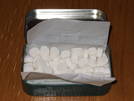 | Some strong mints | 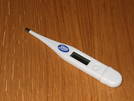 | An oral thermometer |
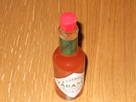 | Something with a little chilli inside, such as tabasco sauce. |
Instructions
We are trying to find out if there is any change in temperature when you eat a mint or chilli, so the first thing you should do is take the temperature of the part of your mouth where you are going to suck your mint. Note this down,
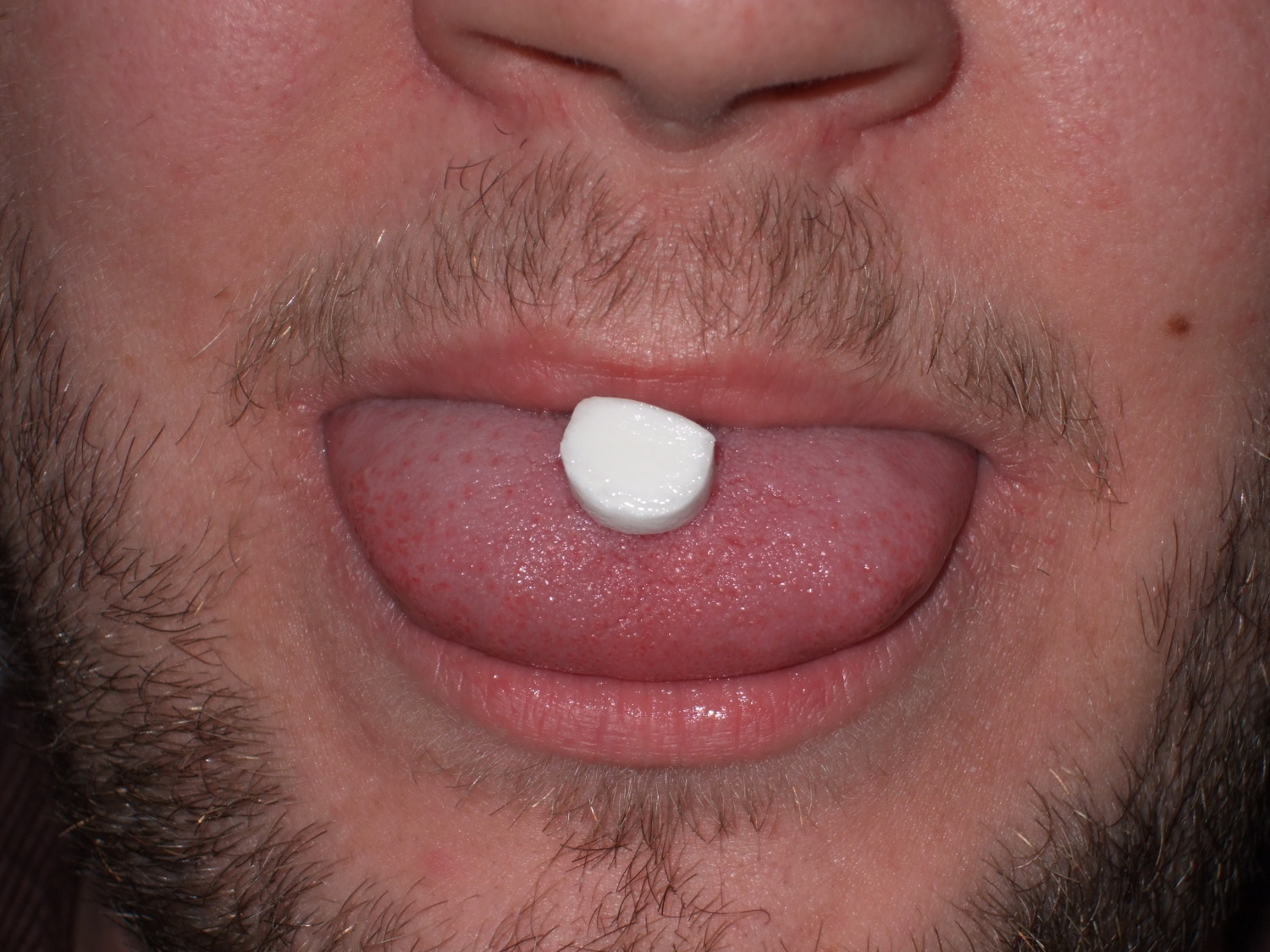 | 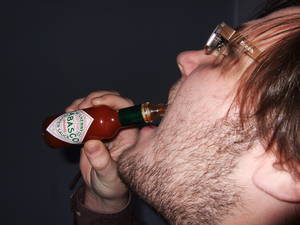 |
| A mint on Ben's tongue | How not to add the tabasco sauce. Put a drop on your finger... |
Now suck your mint for a couple of minutes, does your mouth feel hotter or colder?
Now take the temperature of your mouth again. Is there any difference?
Wait a few minutes for the effect to die down then take your temperature again and try doing the same thing with a small drop of tabasco sauce (I would put it on your finger to transfer it to your mouth).
If you are feeling really adventurous, try a mint with a small drop of tobasco on the top, to find out if the two effects cancel.
Result
 |
| Ben with the thermometer in his mouth in the same place as the mint. A man born to smoke the pipe, but he doesn't smoke. |
You should find that adding a mint to your mouth doesn't make your mouth any colder, in fact we found it made Ben's mouth a few tenths of a degree warmer.
Similarly the tabasco sauce doesn't make your mouth any warmer, we actually found that Ben's mouth got about 1.3°C colder!
And as for the mint and the tabasco - apparently it starts off feeling hot, and then you get waves of hot and cold sensations and eventually it just feels hot. Ben says it is a very strange, but perculiarly addictive experience.
Explanation
As the results should suggest, you just feel the change in temperature it is not a real effect. You feel temperature with two different sets of nerve cells. One set called TRP-V1 will detect increases in temperature and TRP-M8 will detect decreases.
When the temperature decreases the TRP-M8 neurons will open sodium gates, allowing positive sodium ions to move into the cell and potassium to flow out, this creates a voltage which sends a signal along the thin tail of the nerve cell towards your brain. Similarly when the TRP-V1 cells heat up they also send a signal.
In the mint there is a molecule called menthol. This has the effect of fooling the nerve cell into opening the sodium gates on the cold sensing neurons and triggering a sensation of coldness. In the chilli there is a chemical called capsacin which has the same effect on the TRP-V1 nerves, creating the sensation of heat with no actual change in temperature.
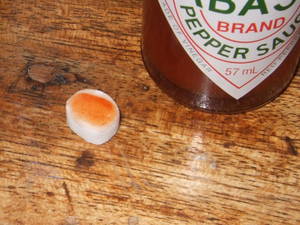 We found a slight change in actual temperature in the opposite direction to your sensation. This could easily be a fluke and it should be tested by more repetition. But it could be an example of your body detecting that your mouth is cold, so it rushes blood in to warm it up, and vice versa.
We found a slight change in actual temperature in the opposite direction to your sensation. This could easily be a fluke and it should be tested by more repetition. But it could be an example of your body detecting that your mouth is cold, so it rushes blood in to warm it up, and vice versa.
It is hard to tell exactly what is going on with both the mint and chilli at the same time, without a lot more research. But it would appear that the chilli acts much more quickly than the menthol, and it somewhat confuses your sensory systems to feel something both hot and cold at the same time.
If you want to find out more try reading our article '
Does a Hot Mint Still Taste Cold?'
- Previous Vortex Cannon
- Next Colours in CDs










Comments
Add a comment